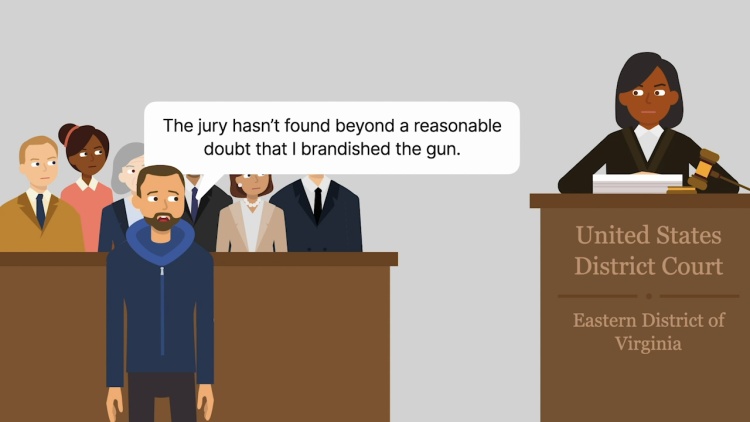Alleyne v. United States
United States Supreme Court
570 U.S. 99, 133 S.Ct. 2151, 186 L.Ed.2d 314 (2013)

- Written by Sean Carroll, JD
Facts
Allen Ryan Alleyne (defendant) was charged with holding up a storeowner, while the storeowner was driving his store’s deposits to the bank. Alleyne’s accomplice had approached the car with a gun. The federal statute prohibiting using or carrying a firearm in relation to a crime of violence provided for the following minimum sentences, depending on the nature of the use of the gun: (1) five years for simply carrying the gun, (2) seven years for brandishing the gun, and (3) ten years for discharging the gun. The jury found that Alleyne had used or carried the firearm as part of the crime, but did not specify which level of mandatory minimum sentencing applied. During sentencing, the district court judge found that Alleyne had brandished the gun and sentenced him to seven years in prison. Alleyne appealed, arguing that the sentence violated his Sixth Amendment right to trial by jury, because the jury had not found that he brandished the gun. The United States Court of Appeals for the Fourth Circuit affirmed, based on Harris v. United States, 536 U.S. 545 (2002). The United States Supreme Court granted certiorari.
Rule of Law
Issue
Holding and Reasoning (Thomas, J.)
Concurrence (Sotomayor, J.)
Concurrence (Breyer, J.)
Dissent (Roberts, J.)
Dissent (Alito, J.)
What to do next…
Here's why 899,000 law students have relied on our case briefs:
- Written by law professors and practitioners, not other law students. 47,000 briefs, keyed to 994 casebooks. Top-notch customer support.
- The right amount of information, includes the facts, issues, rule of law, holding and reasoning, and any concurrences and dissents.
- Access in your classes, works on your mobile and tablet. Massive library of related video lessons and high quality multiple-choice questions.
- Easy to use, uniform format for every case brief. Written in plain English, not in legalese. Our briefs summarize and simplify; they don’t just repeat the court’s language.





